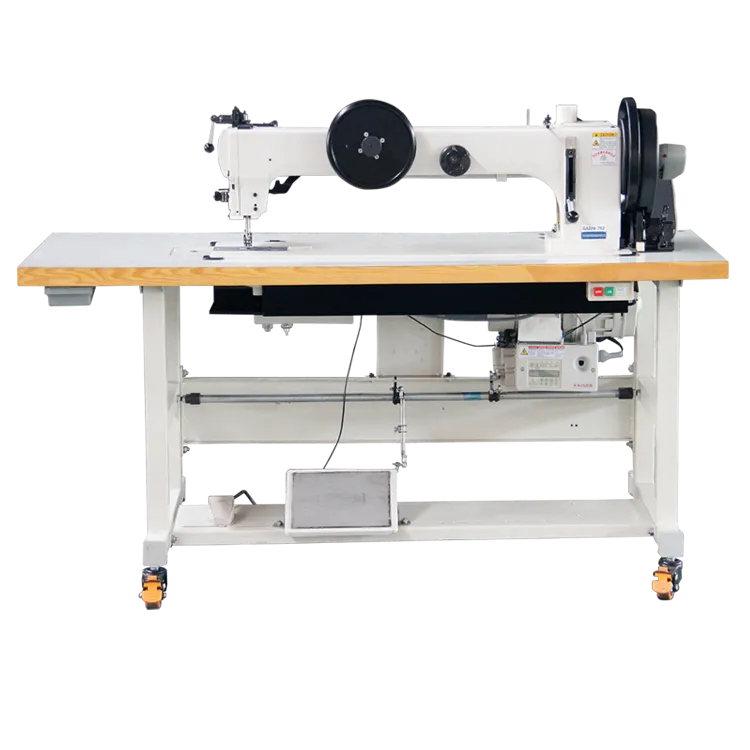Automotive Interior Sewing Machines for Precision Upholstery and Seamless Fabrication
The Evolution of Auto Interior Sewing Machines Revolutionizing Automotive Upholstery
In the world of automotive manufacturing, precision, speed, and quality are paramount. Auto interior sewing machines play a crucial role in producing the upholstery that defines the interior aesthetics and comfort of a vehicle. From luxury cars to mass-market sedans, the importance of high-quality sewing machines cannot be overstated, as they facilitate the intricate work involved in creating seats, door panels, and other interior elements.
Historical Context
The inception of sewing machines can be traced back to the early 19th century, but it wasn’t until the automotive industry began to flourish in the early 20th century that specialized machines for vehicle interiors became necessary. As cars transitioned from luxury items to household staples, manufacturers sought ways to streamline production while maintaining an appealing finish. This need led to the development of auto interior sewing machines that could handle thicker materials such as leather, vinyl, and durable fabrics.
Features of Modern Auto Interior Sewing Machines
Today's auto interior sewing machines are marvels of engineering. They are equipped with advanced features that enhance their functionality and efficiency. Here are some key attributes
1. Multi-Needle Systems Modern sewing machines often employ multi-needle systems, allowing for intricate stitching patterns that enhance the overall design of the automobile's interior.
2. Computerized Controls Automation through computerized systems enables precise control over stitching patterns, tensions, and speeds. This advancement reduces human error and increases productivity.
3. Versatile Fabric Handling Advanced machines can handle various materials, including heavy-duty leather and lightweight fabrics, ensuring that manufacturers can cater to a diverse range of customer preferences and specifications.
auto interior sewing machine

4. Industrial Durability Auto interior sewing machines are designed to withstand the rigors of continuous operation. Their robust construction ensures longevity, reducing the need for frequent maintenance and repairs.
5. Ergonomic Design Modern machines prioritize user comfort, featuring adjustable tables and user-friendly interfaces, which facilitate ease of use during long production runs.
The Role of Technology
The integration of technology into auto interior sewing machines has transformed the industry. CAD (Computer-Aided Design) software is often used to design upholstery patterns, which can then be directly transferred to sewing machines. This process not only saves time but also provides unparalleled precision in the production of complex designs or logos. Additionally, robotics are increasingly being integrated into manufacturing lines to assist with material handling and positioning, further enhancing the efficiency of the sewing process.
Challenges and Innovations
Despite the advancements, the industry faces challenges, such as ensuring consistency in stitching quality and adapting to ever-changing design trends. Manufacturers must constantly innovate, exploring sustainable materials and eco-friendly production methods. This drives the need for sewing machines that can work with new, softer, and more biodegradable fabrics without sacrificing quality or durability.
Furthermore, as electric and autonomous vehicles emerge, the demand for sophisticated interior designs increases. This places even greater pressure on auto interior sewing machines to produce premium upholstery that meets the expectations of a more discerning consumer base.
Conclusion
Auto interior sewing machines have come a long way from their humble beginnings. They play an indispensable role in the automotive industry, combining technology, artistry, and engineering to deliver high-quality products that contribute to the comfort and aesthetic value of vehicles. As the industry evolves, so too will the sewing machines, continuously pushing the boundaries of what is possible in automotive upholstery. The future promises even more innovations that will redefine the interiors of tomorrow's vehicles, ensuring that they remain as functional as they are beautiful. With ongoing developments in technology and materials, the potential for transformation remains vast, making it an exciting time for manufacturers and consumers alike.
-
Boost Production Efficiency with a Pattern Sewing MachineNewsAug.29,2025
-
Industrial Excellence with the Best Heavy Duty Sewing MachineNewsAug.29,2025
-
Precision and Power with the Best Pattern Sewing MachineNewsAug.29,2025
-
Reliable Bulk Packaging Starts With the Right FIBC Sewing MachineNewsAug.29,2025
-
Advanced Packaging Solutions: Elevate Productivity with Jumbo Bag Sewing Machine and Industrial Stitching EquipmentNewsAug.29,2025
-
High-Performance Solutions for Bulk Packaging: FIBC Sewing Machine and MoreNewsAug.29,2025
-
Maximize Efficiency with an Industrial Cylinder Arm Sewing MachineNewsAug.28,2025


























